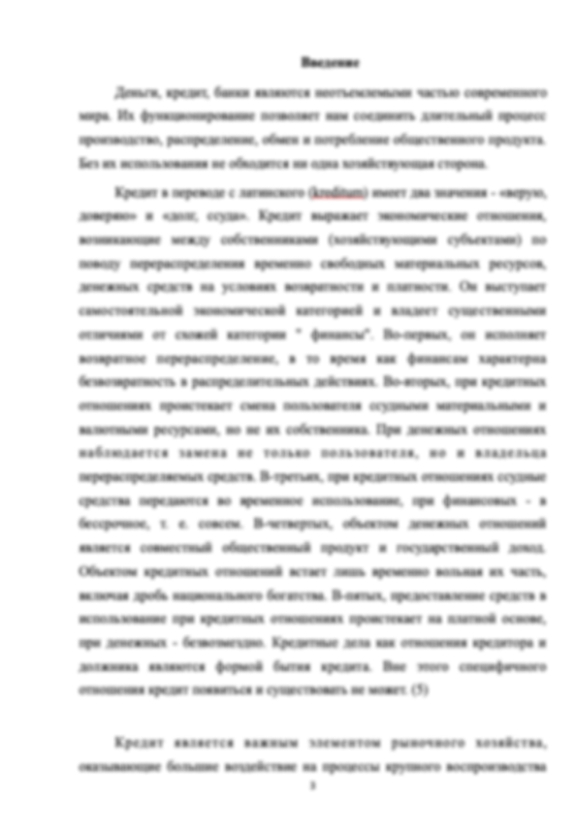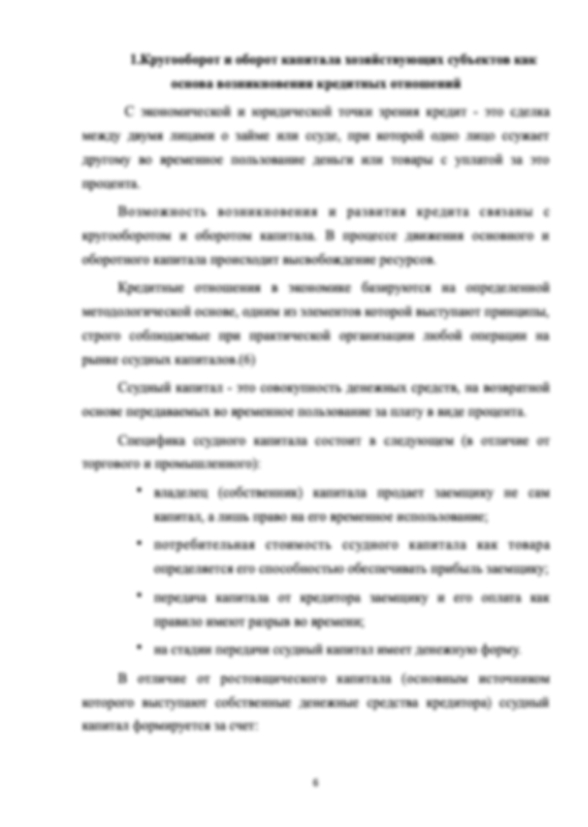Спасибо!
Информация о работе
Подробнее о работе

Материалы и технологии для получения высокопрочных полиакрилонитрильных прекурсоров углеродного волокна
- 33 страниц
- 2022 год
- 1 просмотр
- 0 покупок
Гарантия сервиса Автор24
Уникальность не ниже 50%
Фрагменты работ
Композитные материалы, армированные углеродным волокном, используются для применений, где требуется высокая прочность и легкий вес. К ним относятся аэрокосмическая промышленность, автомобилестроение, гражданское строительство, производство энергии и военное применение. В настоящее время углеродные волокна с высокой средней прочностью на растяжение (6,6 ГПа) и высоким модулем упругости (324 ГПа) являются волокна T1100G, производимые компанией Toray. Углеродные волокна M60J с модулем упругости 590 ГПа, произведенные с самым высоким средним модулем упругости, также производятся компанией Toray, но они имеют среднюю прочность на растяжение 3,9 ГПа [1]. Это отражает то, что, когда волокна графитизируются при температуре >2500 °C, как это происходит для волокон ...
СОДЕРЖАНИЕ
ВВЕДЕНИЕ
ГЛАВА 1. ВЫБОР ПРЕКУРСОРА
1.1 Полиакрилонитрил (ПАН)
ГЛАВА 2. СИНТЕЗ ПОЛИМЕРА НА ОСНОВЕ ПАН
2.1 Способы полимеризации
2.2 Полимерная композиция
2.3 MW полимера
ГЛАВА 3. ПРИГОТОВЛЕНИЕ ПОЛИМЕРНОГО РАСТВОРА
3.1 Содержание полимера
3.2 Растворитель
3.3 Однородное перемешивание и деаэрация
3.4 Нагрев и фильтрация полимерного раствора
ГЛАВА 4. ПЛЕТЕНИЕ РАСТВОРА ПАН-ПОЛИМЕРА В ВОЛОКНО-ПРЕКУРСОР
4.1 Формирование волокна-прекурсора круглой формы из полимерного раствора
4.2 Сведение к минимуму пустот и дефектов в волокне-прекурсоре ПАН
4.3 Предпочтительный способ плетения полимеров ПАН в высококачественные волокна-прекурсоры
4.4 Роль параметров фильеры
4.5 Мокроструйное плетение
4.6 Влияние концентрации коагулянта на форму поперечного сечения и прочность волокна-прекурсора.
4.7 Влияние температуры ванны с коагулянтом на форму поперечного сечения и прочность волокна-прекурсора.
4.8 Влияние струйного растяжения на диаметр и прочность волокна-прекурсора
4.9 Вытягивание
4.10 Погружение после вращения
4.11 Вращение воздушного зазора
4.12 Гелевое плетение
ЗАКЛЮЧЕНИЕ
СПИСОК ИСПОЛЬЗОВАННЫХ ИСТОЧНИКОВ
Работа представляет объемный обзор состоящих из 33 страниц (шрифт 12). Несмотря что данная работа является курсовой объемной работой, она с легкостью подойдет в качестве реферата. В работе подробно изложены методики получения и применения углеродного волокна. Стоит отметить, что работа имеет высокий процент оригинальности, так как не представляет собой части других работ и написана на основании литературы представленной ниже (71 источник).
[1] Edie D. D. The effect of processing on the structure and properties of carbon fibers // Carbon. 1998. V. 36. P. 345-362. https://doi.org/10.1016/S0008-6223(97)00185-1.
[2] Edie D. D. Carbon Fibers Filaments and Composites //Springer Netherlands. 1990. P 43.
[3] Matsumoto T. Mesophase pitch and its carbon fibers // Pure Appl. Chem. 1985. V. 57. P. 1553-1562. http://dx.doi.org/10.1351/pac198557111553.
[4] Johnson D. Structure-property relationships in carbon fibres // J. Phys. D: Appl. Phys. 1987. V. 20. P. 286. https://iopscience.iop.org/article/10.1088/0022-3727/20/3/007.
[5] Gupta A., Paliwal D., Bajaj P. Acrylic Precursors for Carbon Fibers // J. Macromol. Sci. Polym. Rev. 1991. V.31. P. 1-89. https://doi.org/10.1080/15321799108021557.
[6] Morgan P. In Carbon Fibers and their Composites // CRC Press, Boca Raton, Florida, 2005. P. 1-1200. https://doi.org/10.1201/9781420028744.
[7] Chen J., Harrison I. Modification of polyacrylonitrile (PAN) carbon fiber precursor via post-spinning plasticization and stretching in dimethyl formamide (DMF) // Carbon. 2002. V. 40. P. 25-45. https://doi.org/10.1016/S0008-6223(01)00050-1.
[8] Lai C., Zhong G., Yue Z., Chen G., Zhang L., Vakili A., Wang Y., Zhu L., Liu J., Fong H. Investigation of post-spinning stretching process on morphological, structural, and mechanical properties of electrospun polyacrylonitrile copolymer nanofibers // Polymer. 2011. V. 52. P. 519-528. https://doi.org/10.1016/j.polymer.2010.11.044.
[9] Fitzer E., Figueiredo J. L., Bernardo C. A., Baker R. T. K., Hüttinger K. J. Carbon fibers filaments and composites // Springer Netherlands. NATO ASI Series 177. 1990. ISBN 13:
9789401568494.
[10] Edie D. Design and Control of Structure of Advanced Carbon Materials for Enhanced Performance // Springer Netherlands. NATO Science Series E. 2001. V. 374. https://doi.org/10.1007/978-94-010-1013-9.
[11] Bajaj P., Roopanwal A. Thermal Stabilization of Acrylic Precursors for the Production of Carbon Fibers: An Overview // J. Macromol. Sci. Polym. Rev. 1997. V. 37. P. 97-147. https://doi.org/10.1080/15321799708014734.
[12] Mascia L., Paxton E. Physical changes during thermal oxidation of PAN fibres and effects of γ-radiation pre-treatment // Thermochim. Acta. 1991. V.184. P. 251-267. https://doi.org/10.1016/0040-6031(91)80029-I.
[13] Moreton R., Watt W., Tensile Strengths of Carbon Fibres // Nature 1974. V. 247. P. 360-361. https://doi.org/10.1038/247360a0.
[14] Mittal J., Mathur R., Bahl O. Post spinning modification of PAN fibres - a review // Carbon. 1997. V. 35. P. 1713-1721. https://doi.org/10.1016/S0008-6223(97)00126-7.
[15] Fitzer E., Geigl K. H., Huettner W. The influence of carbon fibre surface treatment on the mechanical properties of carbon/carbon composites // Carbon. 1980. V. 18. P. 265. https://doi.org/10.1016/0008-6223(80)90049-4.
[16] Nicoll A.R., Perry A.J. Diameter dependence of carbon fibre mechanical properties // Fiber Sci. Technol. 1970. V. 3. P. 157. https://doi.org/10.1016/0015-0568(73)90004-3.
[17] Tsai J. S. Cyclization propagation path during oxidation of polyacrylonitrile fibre // J. Mater. Sci. Lett. 1994. V. 13. P. 1448-1450. https://doi.org/10.1007/BF00419131.
[18] Fitzer E. Pan-based carbon fibers—present state and trend of the technology from the viewpoint of possibilities and limits to influence and to control the fiber properties by the process parameters // Carbon. 1989. V. 27. P. 621-645. https://doi.org/10.1016/0008-6223(89)90197-8.
[19] Zhang D. Carbon Fibers from Oriented Polyethylene Precursors // J. Thermoplast. Compos. Mater. 1993. V. 6. P.38. https://doi.org/10.1177/089270579300600104.
[20] Gupta V., Kothari V. Manufactured Fiber Technology // Springer Netherlands. 2012. V.1. P. 1-661. https://doi.org/10.1007/978-94-011-5854-1.
[21] Flory P. J. Principles of Polymer Chemistry // Cornell University Press, Ithaca, United States. 1953. P. 1-672. ISBN:0801401348 9780801401343.
[22] An Q., Qian J., Yu L., Luo Y., Liu X. Study on kinetics of controlled/living radical polymerization of acrylonitrile by RAFT technique // J. Polym. Sci. Part A: Polym. Chem. 2005. V.43. P. 1973-1977. https://doi.org/10.1002/pola.20622.
[23] Moad G., Rizzardo E., Thang S.H. Living Radical Polymerization by the RAFT Process // Aust. J. Chem. 2005. V.58. P. 379. https://doi.org/10.1071/CH05072.
[24] Liu D., Chen H., Ji N., Tan Z. Living radical polymerization of acrylonitrile catalyzed by copper with a high concentration of radical initiator and its application in removal of Ag(I) after modification // J. Polym. Sci. Part A: Polym. Chem. 2013. V. 51. P. 340-346. https://doi.org/10.1002/pola.26386.
[25] Liu X. H., Zhang G. B., Lu X. F., Liu J. Y., Pan D., Li Y. S. Dibenzyl trithiocarbonate mediated reversible addition–fragmentation chain transfer polymerization of acrylonitrile // J. Polym. Sci. Part A: Polym. Chem. 2006. V. 44. P. 490-498. https://doi.org/10.1002/pola.21169.
[26] Niu S., Zhang L., Zhu J., Zhang W., Cheng Z., Zhu X. Synthesis of high molecular weight and narrow molecular weight distribution poly(acrylonitrile) via RAFT polymerization // J. Polym. Sci. Part A: Polym. Chem. 2013. V.51. P.1197-1204. https://doi.org/10.1002/pola.26488.
[27] Sporl J. M., Ota A., Beyer R., Lehr T., Muller A., Hermanutz F., Buchmeiser M. R. Carbon fibers prepared from tailored reversible-addition-fragmentation transfer copolymerization-derived poly(acrylonitrile)-co-poly(methylmethacrylate) // J. Polym. Sci. Part A: Polym. Chem. 2014.V. 52. P. 1322-1333. https://doi.org/10.1002/pola.27121.
[28] Wang Y. X., Wang C. G., Yu M. J. Effects of different coagulation conditions on polyacrylonitrile fibers wet spun in a system of dimethylsulphoxide and water // J. Appl. Polym. Sci. 2007. V. 104. P. 3723-3729. https://doi.org/10.1002/app.25723.
[29] Tsai J. S., Lin C. H. Effect of comonomer composition on the properties of polyacrylonitrile precursor and resulting carbon fiber // J. Appl. Polym. Sci. 1991.V. 43. P. 679-685. https://doi.org/10.1002/app.1991.070430405.
[30] Tsai J. S., Lin C. H. Polyacrylonitrile precursors by copolymer and additive with itaconic acid // J. Mater. Sci. Lett. 1990.V. 9. P. 869-871. https://doi.org/10.1007/BF00722155.
[31] Tsai J. S. Measurement of the aromatization index for oxidized polyacrylonitrile fibre by the orientation distribution pattern // J. Mater. Sci. Lett. 1993. V.12. P.1911-1913. https://doi.org/10.1007/BF00882539.
[32] Tsai J. S. Orientation change for polyacrylonitrile precursor during oxidation // J. Mater. Sci. Lett. 1994. V.13. P. 1162-1163. https://doi.org/10.1007/BF00240997.
[33] Mikolajczyk T., Szparaga G., Bogun M., Fraczek-Szczypta A., Blazewicz S. Effect of spinning conditions on the mechanical properties of polyacrylonitrile fibers modified with carbon nanotubes // J. Appl. Polym. Sci. 2010. V.115. P. 3628-3635. https://doi.org/10.1002/app.31414.
[34] Morris E. A., Weisenberger M. C., Bradley S. B., Abdallah M. G., Mecham S. J., Pisipati P., McGrath J. E. Synthesis, spinning, and properties of very high molecular weight poly(acrylonitrile-co-methyl acrylate) for high performance precursors for carbon fiber // Polymer. 2014. V. 55. P. 6471-6482. https://doi.org/10.1016/j.polymer.2014.10.029.
[35] Knudsen J. The Influence of Coagulation Variables on the Structure and Physical Properties of an Acrylic Fiber // J. Textile Res. 1963. V.33. P.13. https://doi.org/10.1177/004051756303300103.
[36] Dong X. G., Wang C. G., Bai Y. J., Cao W. W. Effect of DMSO/H2O coagulation bath on the structure and property of polyacrylonitrile fibers during wet-spinning // J. Appl. Polym. Sci. 2007. V. 105. P. 1221-1227. https://doi.org/10.1002/app.25665.
[37] Rahman M., Ismail A., Mustafa A. The effect of residence time on the physical characteristics of PAN-based fibers produced using a solvent-free coagulation process // Mater. Sci. Eng. A. 2007. V.448 P. 275-280. https://doi.org/10.1016/j.msea.2006.10.042.
[38] Masson J. Acrylic Fiber Technology and Applications // Mooresville, North Carolina. 1995. P.1-408. https://doi.org/10.1201/9781482260359.
[39] Kubisa P. Ionic liquids in the synthesis and modification of polymers // J. Polym. Sci. Part A: Polym. Chem. 2005.V. 43. P. 4675-4683. https://doi.org/10.1002/pola.20971.
[40] Wan S., Zhang Y., Wang H. Acrylic fibers processing with ionic liquid as solvent // Polym. Adv. Technol. 2009. V. 20. P. 857-862. https://doi.org/10.1002/pat.1327.
[41] Kubisa P. Ionic liquids as solvents for polymerization processes-Progress and challenges // Prog. Polym. Sci. 2009. V.34. P.1333-1347. https://doi.org/10.1016/j.progpolymsci.2009.09.001.
[42] Zhang Y., Tu X., Liu W., Wang H. Diffusion dynamics of ionic liquids during the coagulation of solution spinning for acrylic fibers // Polym. Eng. Sci. 2008. V.48. P. 184-190. https://doi.org/10.1002/pen.20951.
[43] Pham T. P. T., Cho C. W., Yun Y. S. Environmental fate and toxicity of ionic liquids: a review // Water Res. 2010. V. 44. P. 352-372. https://doi.org/10.1016/j.watres.2009.09.030.
[44] Ying L., Hou C., Fei W. Diffusion coefficient of DMSO in polyacrylonitrile fiber formation // J. Appl. Polym. Sci. 2006. V.100. P. 4447-4451. https://doi.org/10.1002/app.22344.
[45] Bercea M., Morariu S., Brunchi C. E. Rheological Investigation of Thermal-Induced Gelation of Polyacrylonitrile Solutions // J. Thermophys. 2009. V. 30. P. 1411-1422. https://doi.org/10.1007/s10765-009-0637-8.
[46] Johnson J., Thorne D. Effect of internal polymer flaws on strength of carbon fibres prepared from an acrylic precursor // Carbon. 1969. V. 7. P. 659-660. https://doi.org/10.1016/0008-6223(69)90520-X.
[47] Craig J., Knudsen J., Holland V. Characterization of Acrylic Fiber Structure // Text. Res. J. 1962. V. 32. P. 435. https://doi.org/10.1177/004051756203200601.
[48] Morris E. A., Weisenberger M. C. Solution Spinning of PAN-Based Polymers for Carbon Fiber Precursors // Amer. Chem. Soc. 2014. V.1173. P. 189-213. https://doi.org/10.1021/bk-2014-1173.ch009.
[49] Thorne D. J. Distribution of internal flaws in acrylic fibers // J. Appl. Polym. Sci. 1970. V.14. P. 103-113. https://doi.org/10.1002/app.1970.070140111.
[50] Arbab S., Noorpanah P., Mohammadi N., Soleimani M. Designing index of void structure and tensile properties in wet-spun polyacrylonitrile (PAN) fiber. I. Effect of dope polymer or nonsolvent concentration // J. Appl. Polym. Sci. 2008. V.109. P. 3461-3469. https://doi.org/10.1002/app.28458.
[51] Moreton R., Watt W. The spinning of polyacrylonitrile fibres in clean room conditions for the production of carbon fibres // Carbon 1974. V. 12. P. 543-554. https://doi.org/10.1016/0008-6223(74)90056-6.
[52] Magonov S. N., Gorenberg A. Y., Cantow H. Atomic force microscopy on polymers and polymer related compounds // J. Polym. Bull. 1992. V.28. P. 577-584. https://doi.org/10.1007/BF00296049.
[53] Chari S., Bahl O., Mathur R. Characterisation of acrylic fibres used for making carbon fibres // Fiber Sci. Technol. 1981. V. 15. P. 153-160. https://doi.org/10.1016/0015-0568(81)90068-3.
[54] Rangarajan P., Yang J., Bhanu V., Godshall D., McGrath J., Wilkes G., Baird D. Effect of comonomers on melt processability of polyacrylonitrile // J. Appl. Polym. Sci. 2002. V. 85. P. 69-83. https://doi.org/10.1002/app.10655.
[55] Godshall D., Rangarajan P., Baird D., Wilkes G., Bhanu V., McGrath J. Incorporation of methyl acrylate in acrylonitrile based copolymers: effects on melting behavior // Polymer 2003. V. 44. P. 4221-4228. https://doi.org/10.1016/S0032-3861(03)00369-0.
[56] Hao J., Lu C., Zhou P., Li D. Pore structure development of polyacrylonitrile nascent fibers in water stretching process // Thermochim. Acta. 2013. V. 569. P. 42-47. https://doi.org/10.1016/j.tca.2013.07.008.
[57] Zeng X., Hu J., Zhao J., Zhang Y., Pan D. Investigating the jet stretch in the wet spinning of PAN fiber // J. Appl. Polym. Sci. 2007. V. 106. P. 2267-2273. https://doi.org/10.1002/app.26929.
[58] Dong R., Zhao J., Zhang Y., Pan D. Morphology control of polyacrylonitrile (PAN) fibers by phase separation technique // J. Polym. Sci. Part B: Polym. Phys. 2009. V. 47. P. 261-275. https://doi.org/10.1002/polb.21637.
[59] Liu S., Tan L., Pan D., Chen Y. Gel spinning of polyacrylonitrile fibers with medium molecular weight // Polym. Int. 2011. V. 60. P. 453. https://doi.org/10.1002/pi.2968.
[60] Wang Y. X., Wang C. G., Bai Y. J., Bo Z. Effect of the drawing process on the wet spinning of polyacrylonitrile fibers in a system of dimethyl sulfoxide and water // J. Appl. Polym. Sci. 2007. V. 104. P. 1026. https://doi.org/10.1002/app.24793.
[61] Mathur R., Mittal J., Bahl O., Sandle N. Characteristics of KMnO4-modified PAN fibres—its influence on the resulting carbon fibres' properties // Carbon. 1994. V. 32. P. 71-77. https://doi.org/10.1016/0008-6223(94)90010-8.
[62] Wu G. P., Lu C. X., Wang Y. Y., Ling L. C. Effect of boric acid on oxidative stabilization of polyacrylonitrile fibers // Fibers Polym. 2011. V. 12. P. 979. https://doi.org/10.1007/s12221-011-0979-2.
[63] Mittal J., Mathur R., Bahl O., Inagaki M. Post spinning treatment of PAN fibers using succinic acid to produce high performance carbon fibers // Carbon 1998. V. 36. P. 893-897. https://doi.org/10.1016/S0008-6223(97)00198-X.
[64] Mathur R., Mittal J., Bahl O. Bimodification of polyacrylonitrile (PAN) fibers // J. Appl. Polym. Sci. 1993. V. 49. P. 469-476. https://doi.org/10.1002/app.1993.070490311.
[65] Zhang W. X., Wang Y. Z. Manufacture of carbon fibers from polyacrylonitrile precursors treated with CoSO4 // J. Appl. Polym. Sci. 2002. V. 85. P. 153. https://doi.org/10.1002/app.10560.
[66] Ko T. H., Huang L. C. Preparation of high-performance carbon fibres from PAN fibres modified with cobaltous chloride // J. Mater. Sci. Lett. 1992. V. 27. P. 2429-2436. https://doi.org/10.1007/BF01105054.
[67] Bajaj P., Sreekumar T., Sen K. Structure development during dry–jet–wet spinning of acrylonitrile/vinyl acids and acrylonitrile/methyl acrylate copolymers // J. Appl. Polym. Sci. 2002. V. 86. P. 773-787. https://doi.org/10.1002/app.10973.
[68] Fan J., Wen Y., Yang Y., Liu L. Effect of Air Gap on Morphology of Polyacrylonitrile Triangular Fiber // Text. Res. J. 2009. V. 79. P. 611. https://doi.org/10.1177/0040517508095602.
[69] Yang M. C., Chou M. T. Effect of post-drawing on the mechanical and mass transfer properties of polyacrylonitrile hollow fiber membranes // J. Membr. Sci. 1996. V. 116. P. 279-291. https://doi.org/10.1016/0376-7388(96)00055-5.
[70] Du W., Chen H., Xu H., Pan D., Pan N. Viscoelastic behavior of polyacrylonitrile/dimethyl sulfoxide concentrated solution with water // J. Polym. Sci. Part B: Polym. Phys. 2009. V. 47. P. 1437-1442. https://doi.org/10.1002/polb.21743.
[71] Tan L., Wan A., Pan D. Structural changes of polyacrylonitrile precursor fiber induced by γ-ray irradiation // Mater. Lett. 2011. V. 65. P. 3109-3111. https://doi.org/10.1016/j.matlet.2011.06.090.
Форма заказа новой работы
Не подошла эта работа?
Закажи новую работу, сделанную по твоим требованиям


